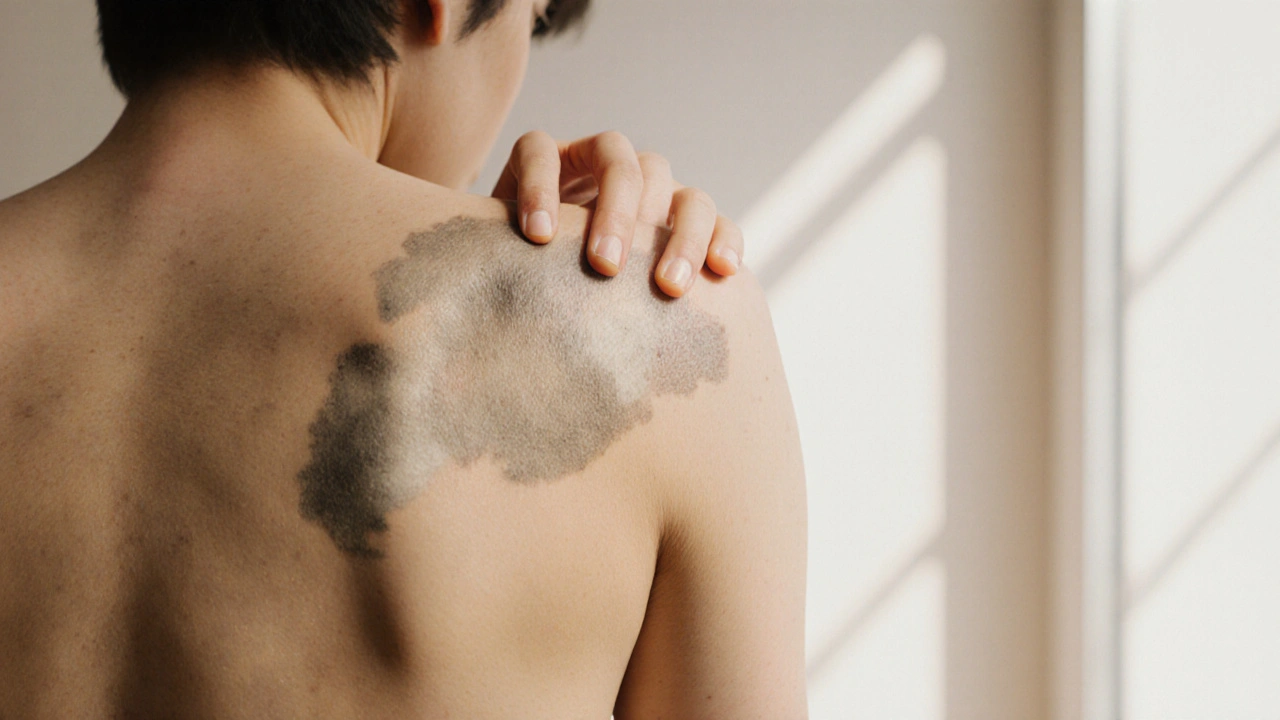Ketoconazole – What It Is and Why It Matters
When working with ketoconazole, a broad‑spectrum antifungal medication used mainly in creams and shampoos. Also known as Nizoral, it tackles fungal infections on the skin and scalp. Antifungal cream formulations containing ketoconazole are a common first‑line choice, especially for conditions like athlete’s foot, ringworm, and seborrheic dermatitis. Another well‑known topical agent is clotrimazole, which often gets mentioned alongside ketoconazole in treatment guides.
Ketoconazole works by blocking the synthesis of ergosterol, a key component of fungal cell membranes. Without ergosterol, the fungus can’t maintain its structure and dies off. This mechanism is shared by many antifungal drugs, but ketoconazole’s chemical structure gives it strong penetration into the outer skin layers, making it especially effective for stubborn infections. The same principle applies to oral formulations, though those are reserved for severe cases because of potential liver toxicity.
How Ketoconazole Stacks Up Against Common Alternatives
When you compare ketoconazole with other over‑the‑counter options, a few patterns emerge. Clotrimazole, for instance, is also a broad‑spectrum agent but tends to be a bit milder on the skin, which can be helpful for sensitive patients. Terbinafine, another popular cream, focuses more on dermatophytes (the fungi that cause ringworm) and often clears symptoms faster for those specific infections. In practice, doctors pick a product based on the type of fungus, the location of the rash, and the patient’s skin tolerance.
Pricing and availability matter too. Ketoconazole creams are widely stocked in pharmacies and usually cost a bit more than generic clotrimazole, but many users report better results for scalp conditions like dandruff or seborrheic dermatitis. Terbinafine can be pricier still, yet its short‑course treatment (often just one week) can offset the cost for some people. Knowing these trade‑offs helps you choose the right product without guessing.
Safety is another piece of the puzzle. Topical ketoconazole is generally safe, with the most common side effects being mild irritation or itching at the application site. Oral ketoconazole, however, carries a warning for liver monitoring, which is why most health guides steer users toward the cream unless a doctor specifically prescribes the tablet form for systemic infections.
Beyond skin health, ketoconazole has a niche role in hormonal therapy. In low doses, it can block androgen production, making it useful for conditions like polycystic ovary syndrome (PCOS) or certain types of hair loss. This off‑label use is less common and always supervised by a specialist because of the hormone‑related side effects.
For everyday use, the application routine is simple: clean the affected area, apply a thin layer of the cream, and let it dry before covering with clothing. Most guidelines recommend twice‑daily use for two to four weeks, even if the rash looks better sooner. Skipping doses or stopping early often leads to a rebound infection.
While ketoconazole shines in many scenarios, there are cases where it’s not the best fit. Histoplasmosis or deep systemic fungal infections typically require oral antifungals like itraconazole. Similarly, people with known liver disease should avoid oral ketoconazole and discuss alternatives with their doctor.
In the broader antifungal landscape, ketoconazole’s role is well‑established, but staying informed about newer agents and resistance patterns is key. Some fungi have started showing reduced sensitivity to older drugs, prompting researchers to develop next‑generation compounds. Until then, the tried‑and‑true ketoconazole cream remains a reliable option for most superficial fungal problems.
Below you’ll find a curated list of articles that dig deeper into ketoconazole’s uses, compare it side‑by‑side with clotrimazole, terbinafine, and other treatments, and offer practical tips for buying safe, affordable products online. Whether you’re looking for a quick guide on treating athlete’s foot or need to understand the nuances of oral versus topical therapy, the collection has something for you.
How Effective Are Antifungal Medications for Tinea Versicolor?
Learn how well antifungal medications work against tinea versicolor, compare topical and oral options, and discover tips to keep the condition from returning.
View More
